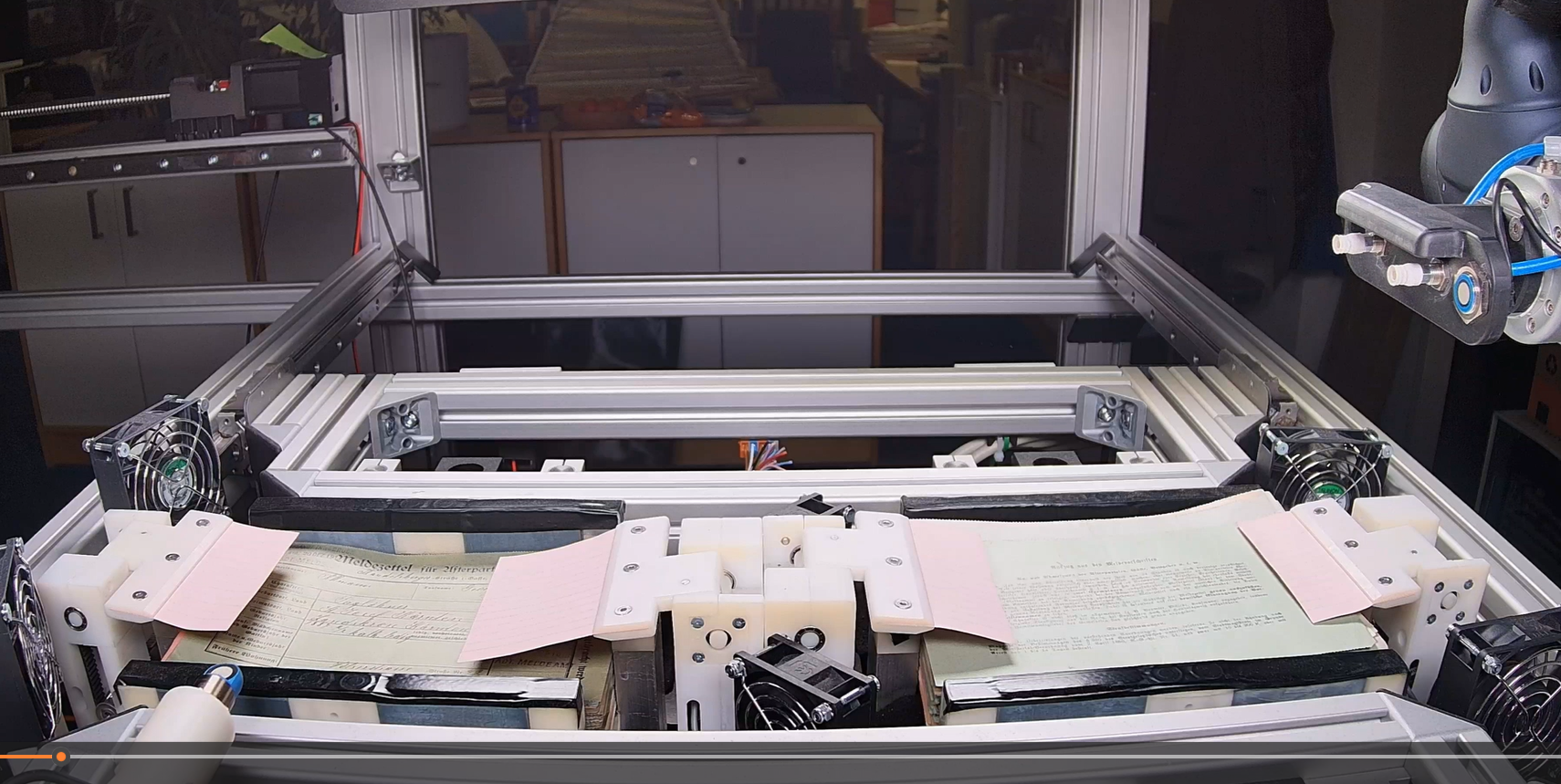At the “Digitise.Transform.Inspire” event on September 1st, 2025, Günter Mühlberger from the University of Innsbruck’s Digital Humanities Research Centre presented his work on automated robotic scanning systems for fragile historical documents.
 Image © Günter Mühlberger
Image © Günter Mühlberger
The Challenge of Fragile Documents
Traditional automated document feeding scanners cannot handle delicate historical materials, particularly loose-leaf collections like registration forms from the early 20th century. Mühlberger’s team has developed a prototype robotic scanner for carefully digitizing loose A4-sized papers.
Technical Approach
The system combines standard industrial components from multiple sectors:
- Robotic industry: robotic arms, motors, sensors, and electronic controls
- Paper industry: vacuum suckers, air knives, and ultrasonic sensors
- Imaging industry: 3D, 2D, and surveillance cameras
- Software libraries: including openCV for computer vision
The team has developed specialized modules including multifunctional end-effectors and custom paper cradles to handle books and loose documents with extreme care.
Proven Results with Historical Archives
The pilot project focused on 400,000 registration cards from the Tyrolean State Archive - highly fragile documents that required both front and backside scanning. Results:
- Over 99% success rate in correctly scanning registration cards
- 24/7 automated operation with minimal human intervention (approximately 1 hour per day)
- Robust handling of unexpected cases like small, glued, or folded cards
Future Directions and AI Integration
Mühlberger outlined plans for improving the system:
- AI-powered perception to detect abnormal events such as skewed, smaller, or damaged cards
- Remote control capabilities allowing human operators to solve complex cases via web interface
- Offshore service integration for round-the-clock problem resolution
The presentation included a video demonstration of the robotic system in action.
Implications for Digital Heritage
This technology enables archives to digitize fragile collections that cannot be processed with conventional scanners. While the initial investment is substantial, continuous operation with minimal supervision makes it viable for large-scale digitization projects.
The University of Innsbruck’s Digitisation and Digital Preservation group continues to develop this technology.
Contact: Günter Mühlberger (guenter.muehlberger@uibk.ac.at), Patrick Schönegger (patrick.schoenegger@uibk.ac.at)